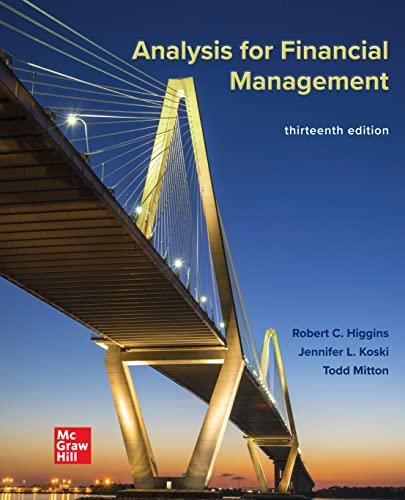Question
Jess Lawson is the CFO for ABC Co. She is looking at five projects for potential investment in the second half of Year 1. She
Jess Lawson is the CFO for ABC Co. She is looking at five projects for potential investment in the second half of Year 1. She has asked her senior analyst, Eric Whitelaw, to review the projects to determine which ones the company should pursue. Jess has provided two scenarios to Eric, along with the estimated cash flows for each project and appropriate discount rates. Using the information provided in the exhibits, complete the table below.
For each project in column A, enter the NPV in column B and then rank the projects 15 (1 being the highest) in column C
| A | B | C |
| Project | NPV | Rank |
| 1 |
|
|
| 2 |
|
|
| 3 |
|
|
| 4 |
|
|
| 5 |
|
|
Present Value of $1
| Discount Rates | |||||
| Years | 5% | 5.50% | 6% | 6.5% | 7% |
| 1 | 0.9524 | 0.9479 | 0.9434 | 0.9390 | 0.9346 |
| 2 | 0.9070 | 0.8985 | 0.8900 | 0.8817 | 0.8734 |
| 3 | 0.8638 | 0.8516 | 0.8396 | 0.8278 | 0.8163 |
| 4 | 0.8227 | 0.8072 | 0.7921 | 0.7773 | 0.7629 |
| 5 | 0.7835 | 0.7651 | 0.7473 | 0.7299 | 0.7130 |
| 6 | 0.7462 | 0.7252 | 0.7050 | 0.6853 | 0.6663 |
Present Value of an Ordinary Annuity of $1
| Discount Rates | |||||
| Years | 5% | 5.50% | 6% | 6.5% | 7% |
| 1 | 0.9524 | 0.9479 | 0.9434 | 0.9390 | 0.9346 |
| 2 | 1.8594 | 1.8464 | 1.8334 | 1.8207 | 1.8080 |
| 3 | 2.7232 | 2.6980 | 2.6730 | 2.6485 | 2.6243 |
| 4 | 3.5459 | 3.5052 | 3.4651 | 3.4258 | 3.3872 |
| 5 | 4.3294 | 4.2703 | 4.2124 | 4.1557 | 4.1002 |
| 6 | 5.0756 | 4.9955 | 4.9174 | 4.8410 | 4.7665 |

Step by Step Solution
There are 3 Steps involved in it
Step: 1

Get Instant Access to Expert-Tailored Solutions
See step-by-step solutions with expert insights and AI powered tools for academic success
Step: 2

Step: 3

Ace Your Homework with AI
Get the answers you need in no time with our AI-driven, step-by-step assistance
Get Started


